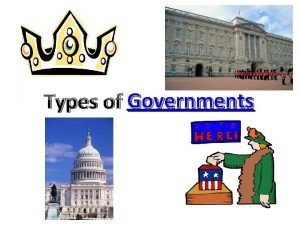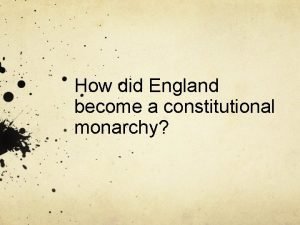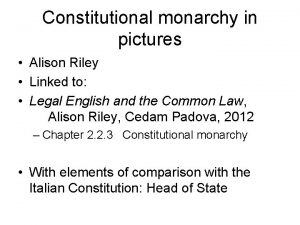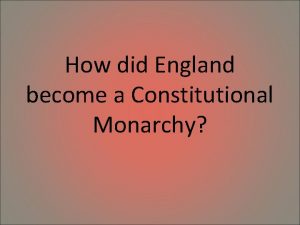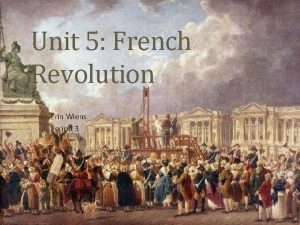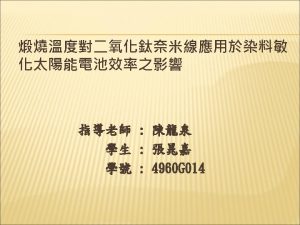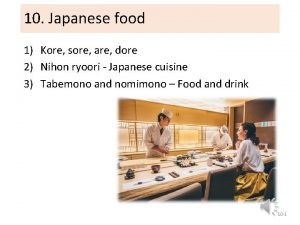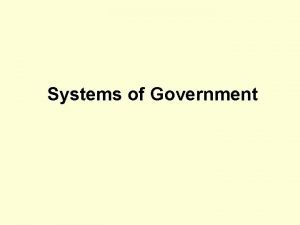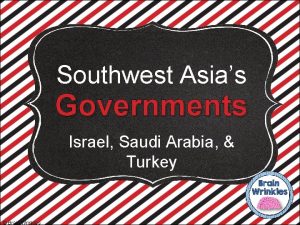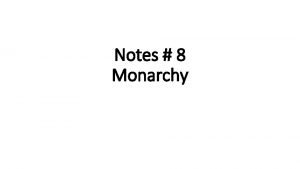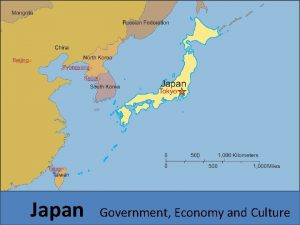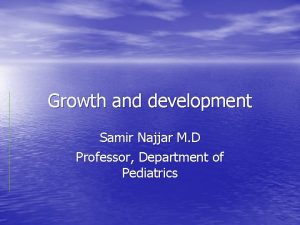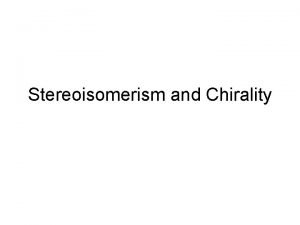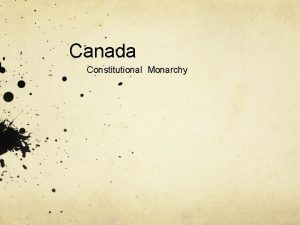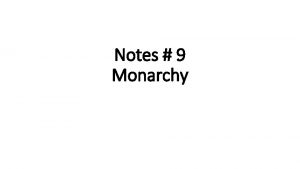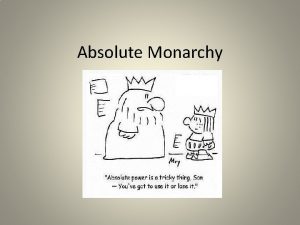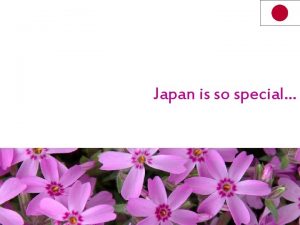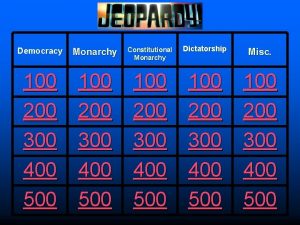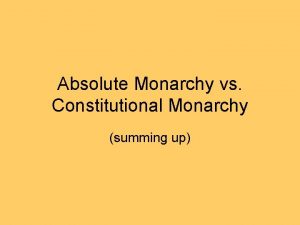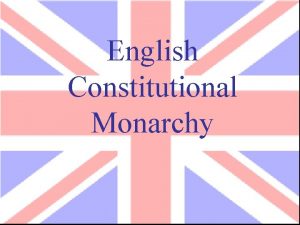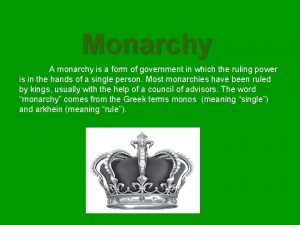Government of Japan Nihon Seifu Constitutional Monarchy Government














- Slides: 14

Government of Japan (日本政府 Nihon Seifu)

Constitutional Monarchy Government Japan is a constitutional monarchy with the emperor as the head of state. Under the present Constitution of Japan, the emperor is the symbol of the state and unity of the people. He performs ceremonial duties and holds no real power; not even emergency reserve powers. The Emperor as directed by the Diet appoints the prime minister and the chiefs of the executive and judicial branches.

The Imperial House of Japan (皇室 Kooshitu) u His Imperial Majesty Emperor Akihito (January 7, 1989 - Present ) Emperar Akihito (明仁), KG, (born December 23, 1933) is the current Emperor (天皇 tennō) of Japan, the 125 th person to hold that title, according to the traditional order of succession. He acceded to the throne in 1989, and so is ranked 26 th among the world's reigning monarchs and lifelong leaders; he is the world's only reigning monarch with the title of emperor. The Era of Akihito's reign bears the name "Heisei" (平 成). u Her Imperial Majesty Empress Michiko of Japan, (born October 20, 1934) formerly Michiko Shōda (正田 美智子 Shōda Michiko) and later the Crown Princess of Japan (April 10, 1959 to January 7, 1989), is the wife and consort of the reigning Emperor of Japan, HIM Emperor Akihito. She was the first commoner to marry into the Japanese imperial family. As crown princess and later as empress, she has become the most visible and widely traveled imperial consort in Japanese history.

The Cabinet (内閣, Naikaku) Is the executive branch of the government of Japan. It consists of the Prime Minister and up to fourteen other members, called Ministers of State. A paulownia flower pattern is considered to be a symbol of the Japanese prime minister and cabinet routinely.

The National Diet of Japan (国会 kokkai) is Japan's legislature. It consists of two houses: the House of Representatives and the House of Councillors. Both houses of the Diet are directly elected under a parallel voting system. As well as passing laws, the Diet is formally responsible for selecting the Prime Minister. The National Diet Building is located in Tokyo.

The House of Representatives (衆議院 Shūgiin ) is the lower house of the Diet of Japan. Has 480 members, elected for four-year terms. is the more powerful of the two houses, able to override vetoes on bills imposed by the House of Councillors with a two-thirds majority. It can be dissolved by the Prime Minister at will Must be at least at 25 years old

The House of Councillors (参議院 Sangiin) is the upper house of the Diet of Japan. The House of Councillors has 242 members who each serve six year terms, The House cannot be dissolved, as only half of its membership is re-elected at each three years election, using a parallel voting system. must be at least 30 years old,

The Cabinet (内閣, Naikaku) is the executive branch of the government of Japan. It consists of the Prime Minister and up to fourteen other members, called Ministers of State. The Prime Minister is designated by the Diet, and the remaining ministers are appointed and dismissed by the Prime Minister. The Cabinet is collectively responsible to the Diet and must resign if a motion of no confidence is adopted by the House of Representatives. The modern Japanese Cabinet was established by the Constitution of Japan which came into effect in 1947.

The Prime Minister of Japan (内閣総理大臣 Naikaku sōri daijin) The Prime Minister, is appointed by the Emperor as directed by the Diet. He must be a member of either house of the Diet and a civilian (25 years and older).

Shigeru Yoshida (吉田 茂 Yoshida Shigeru ) is the 32 Prime Minister of Japan Graduated from Tokyo Imperial University. was the first one served twice as the Prime Minister of Japan ( 1878 -1967 ) 32 Prime Minister of Japan 1946 -1947; 1948 -1954 His pro-American and pro-British ideals and his knowledge of Western societies, gained through education and political work abroad are what made him the perfect candidate in the eyes of the postwar Allied occupation.

Eisaku Sato (佐藤 榮作 Satou Eisaku) ( 1901 -1975 ) 39 Prime Minister of Japan ; 1964 - 1972 is the 39 Prime Minister of Japan Graduated from Tokyo Imperial University. was the second longest served as the Prime Minister in Japan history He was a popular prime minister due to the growing economy; his foreign policy, which was a balancing act between the interests of the United States and China, was more tenuous. He introduced the Three Non-Nuclear Principles on 1967, it lead Japan entered the Nuclear Non-Proliferation Treaty. The Diet passed a resolution formally adopting the principles in 1971. For this he received the Nobel Peace Prize in 1974.

Yasuhiro Nakasone (中曽根 康弘 Nakasone Yasuhiro) 71 st, 72 nd and 73 rd Prime Minister of Japan (from November 27, 1982 to November 6, 1987) he is best known for pushing through the privatization of stateowned companies, and for helping to revitalize Japanese nationalism during and after his term as prime minister. ( 1918 - ) 45 Prime Minister of Japan 1982 -1987

Junichiro Koizumi (小泉純一郎 Koizumi Junichiro) u 87 th, 88 th and 89 th ( January, 1942 ) 56 Prime Minister of Japan 2001 -2006 Prime Minister of Japan (from 2001 to 2006) Widely seen a maverick leader of the Liberal Democratic Party (LDP), he became known as an economic reformer, focusing on Japan's government debt and the privatization of its postal service. In 2005, led the LDP to win one of the largest parliamentary majorities in modern Japanese history. attracted international attention through his deployment of the Japan Self-Defense Forces to Iraq, and his visits to Yasukuni Shrine which led to diplomatic tensions with China and South Korea.

Shinzo Abe (安倍 晋三 Abe Shinzō) ( September, 1954 ) 57 Prime Minister of Japan Sep, 2007 -Sep, 2008 Dec, 2012 - present 90 th Prime Minister of Japan (from September, 2006 to September, 2007) is Japan's youngest post-World War II prime minister and the first born after the war. was born into a political family, and studied political science in Japan and the United States. gained national fame for the strong stance he took against North Korea, While expected to follow the economic policies of his predecessor, Abe is also expected to improve the previously strained relations with China. He resigned for health reason on 12 September 2007 after months of mounting political pressure After string of 5 Prime Minister, on Sep, 2012 became the President of the LDP, and on Dec, 2012 he became the Prime Minister of Japan again. He was re-elected at the 2014 general election, retain his 2/3 majority.
 Who governs dictatorship
Who governs dictatorship When did england become a constitutional monarchy
When did england become a constitutional monarchy Constitutional monarchy pictures
Constitutional monarchy pictures When did england become a constitutional monarchy
When did england become a constitutional monarchy National assembly
National assembly Nihon shiyaku
Nihon shiyaku Sore dore kore
Sore dore kore Different types of government
Different types of government Which southwest asian government has an absolute monarchy?
Which southwest asian government has an absolute monarchy? Monarchy government
Monarchy government Japan government type
Japan government type Right to constitutional remedies
Right to constitutional remedies Constitutional powers
Constitutional powers Samir najjar
Samir najjar Constitutional isomers
Constitutional isomers
